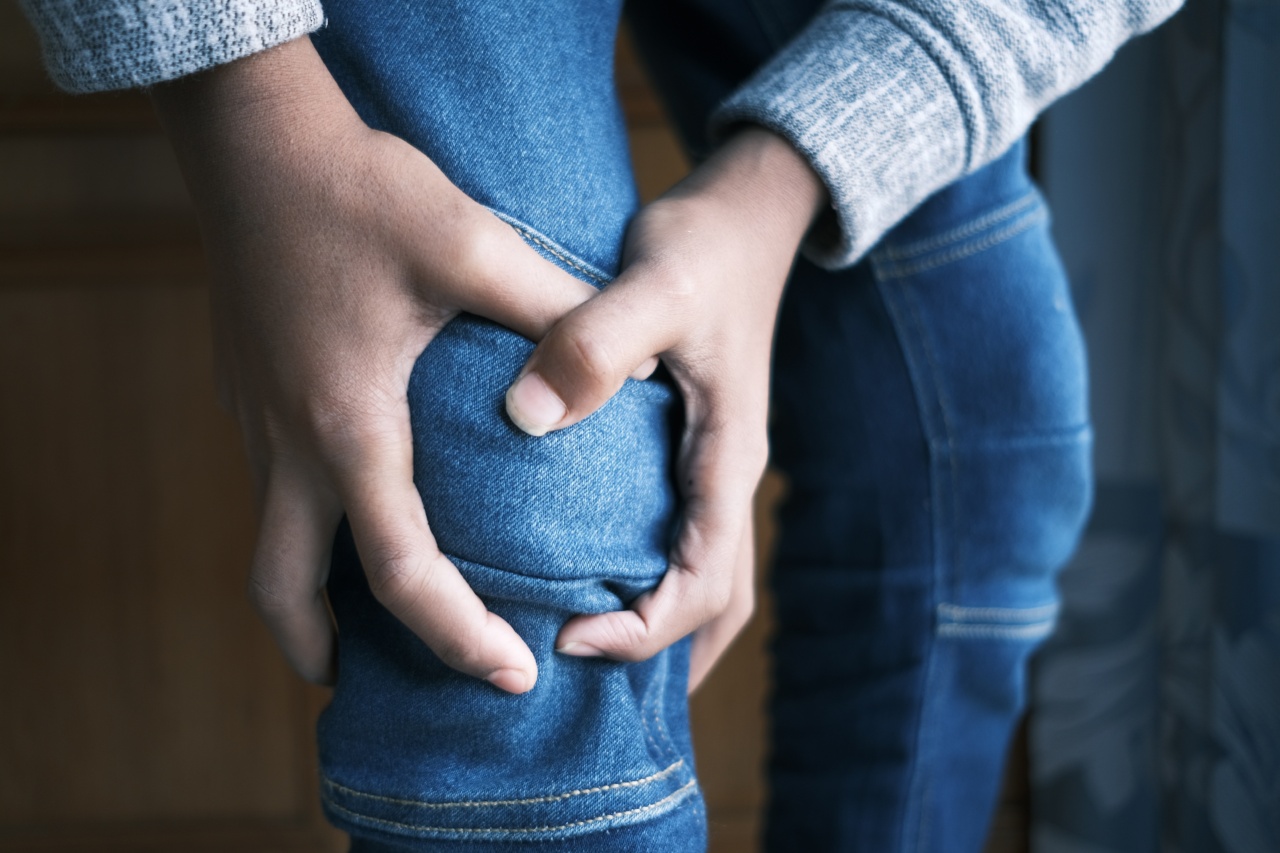Knee pain is a common complaint among people of all ages. The pain can be caused by various reasons such as overuse, injury, or underlying medical conditions.
However, there are several things you can do to manage your knee pain and improve your overall knee health. In this article, we will explore some effective tips and tricks for managing knee pain.
1. Strengthen Your Knee Muscles
Strengthening your knee muscles is one of the most effective ways to manage knee pain. Strong knee muscles can help support your knee joint and reduce pain associated with arthritis or other knee-related conditions.
Some of the exercises that can help strengthen your knee muscles include:.
- Squats
- Lunges
- Step-ups
- Calf raises
These exercises can be done at a gym or at home with minimal equipment. Start slow and gradually increase the intensity and duration of your workout as your knee muscles get stronger.
2. Lose Weight
If you are overweight, losing weight can help reduce the stress on your knee joint and alleviate knee pain. The more weight you carry, the more pressure you put on your knee joint when you walk, run, or do any physical activity.
Losing just a few pounds can make a big difference in your knee health.
To lose weight, you can follow a healthy diet and exercise regularly. Avoid crash diets or fad diets that promise quick weight loss, as they can be harmful to your health. Aim for a gradual weight loss of 1-2 pounds per week.
3. Wear Orthotics
If you have knee pain due to flat feet, wearing orthotics can help alleviate the pain. Orthotics are devices that are placed inside your shoes to provide arch support and cushioning.
They can help distribute your body weight evenly and reduce the stress on your knees.
You can get custom-made orthotics from your doctor or buy over-the-counter orthotics from a pharmacy or online store. Make sure to choose orthotics that fit comfortably and provide adequate support to your feet.
4. Use Heat and Cold Therapies
Heat and cold therapies can help reduce knee pain and inflammation. Heat therapy can improve blood flow to your knee joint, while cold therapy can help numb the pain and reduce swelling.
You can use a heating pad or a hot towel for heat therapy and a cold pack or an ice pack for cold therapy.
Apply heat or cold therapy to your knee for about 20 minutes at a time, several times a day. Make sure to wrap the heat or cold pack in a towel to prevent burns or frostbite.
5. Take Over-the-counter Pain Medications
If your knee pain is mild to moderate, you can take over-the-counter pain medications such as acetaminophen or nonsteroidal anti-inflammatory drugs (NSAIDs) to alleviate the pain.
However, make sure to follow the recommended dosage and do not exceed the maximum dosage or take the medication for too long, as they can have side effects.
6. Get Enough Rest
Resting your knee is important if you have knee pain due to injury or overuse. Avoid activities that put stress on your knees such as running or jumping and take breaks between physical activities to give your knees rest.
You can also elevate your knee while resting to reduce swelling and promote healing.
7. Wear Supportive Shoes
Wearing supportive shoes is important for maintaining good knee health. Shoes that provide good arch support and cushioning can help distribute your body weight evenly and reduce the stress on your knees.
Avoid high heels or shoes that are too tight or too loose, as they can put extra pressure on your knees.
8. Try Physical Therapy
If your knee pain is severe or persistent, you may need to seek professional help. A physical therapist can help assess your knee condition and develop an exercise plan that is tailored to your needs.
They can also teach you proper body mechanics and ways to reduce knee strain during physical activities.
9. Use Assistive Devices
If you have knee pain due to injury or medical condition, using assistive devices can help reduce pain and improve mobility. Some of the devices that can help include:.
- Canes
- Crutches
- Knee braces
- Wheelchairs
Consult your doctor or physical therapist to determine which assistive device is right for you.
10. Consider Surgery
If your knee pain is severe and cannot be managed by conservative methods, your doctor may recommend surgery. Knee surgery can help repair or replace damaged tissues in your knee joint and improve your mobility and quality of life.
However, surgery is usually considered as a last resort option, and you should discuss the risks and benefits with your doctor before making a decision.
Conclusion
Knee pain can be a debilitating condition that can affect your quality of life. However, with proper management and care, you can improve your knee health and alleviate the pain.
Remember to strengthen your knee muscles, lose weight, wear orthotics, use heat and cold therapies, take pain medications, get enough rest, wear supportive shoes, try physical therapy, use assistive devices, and consider surgery if necessary. By following these tips and tricks, you can manage your knee pain and improve your overall knee health.




























